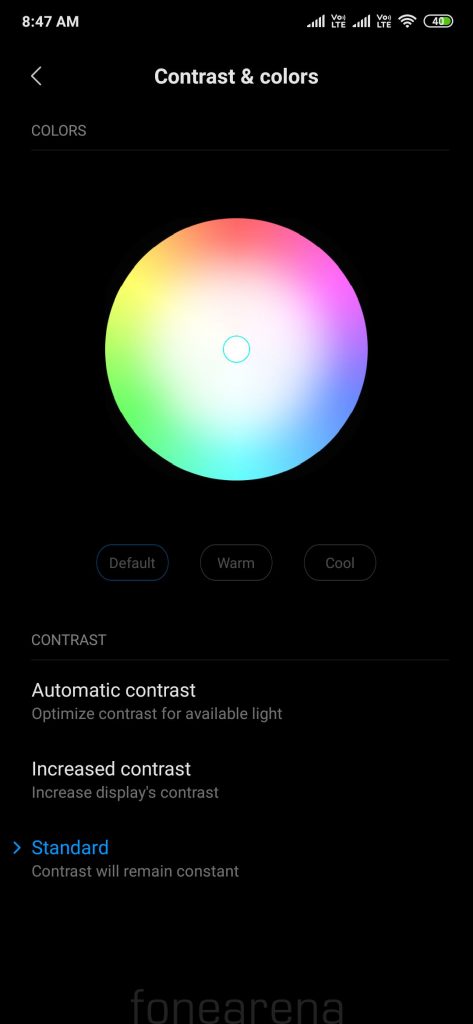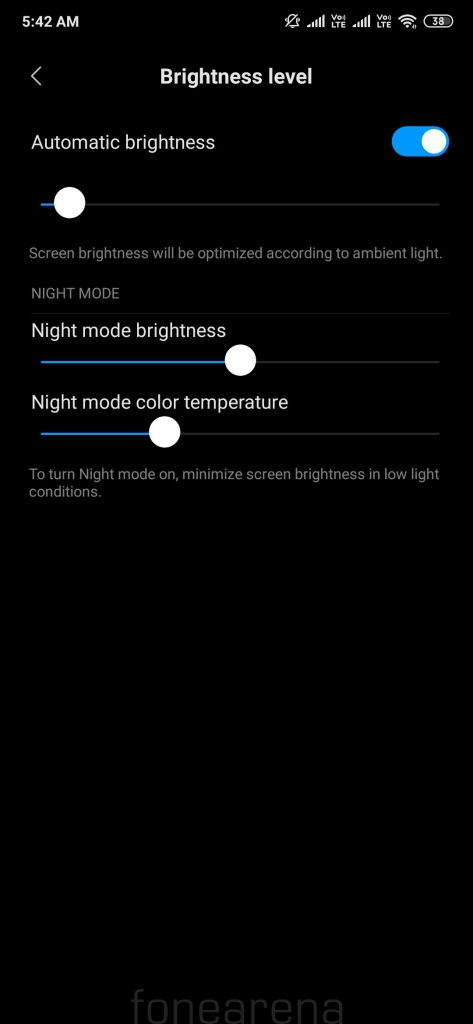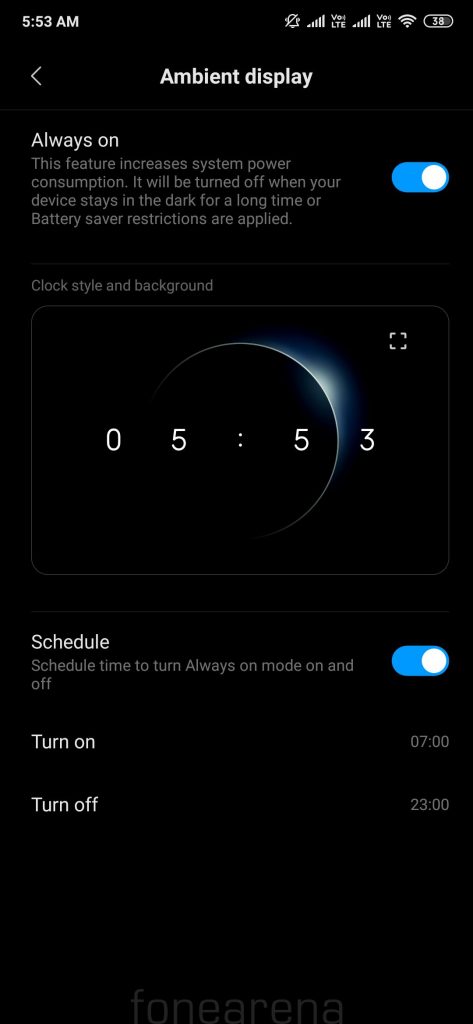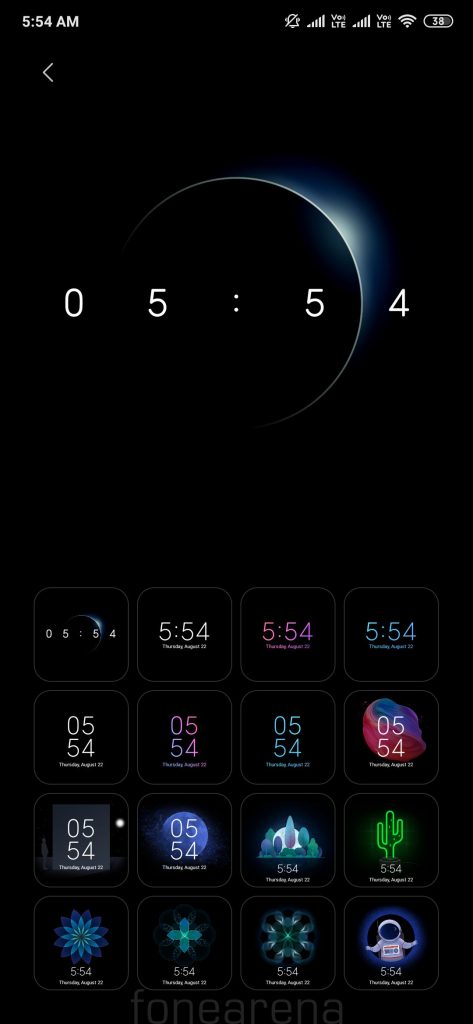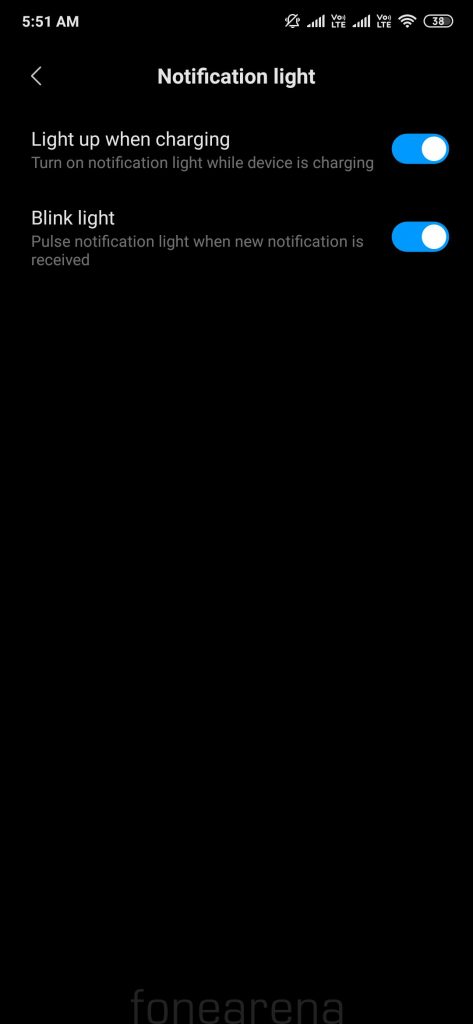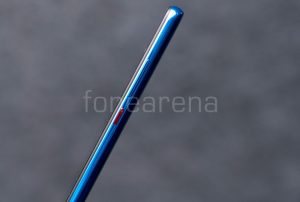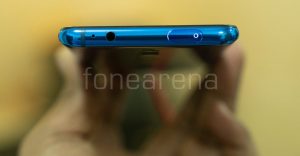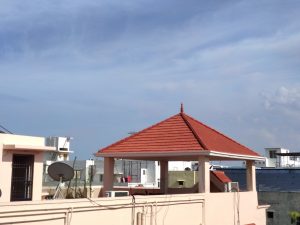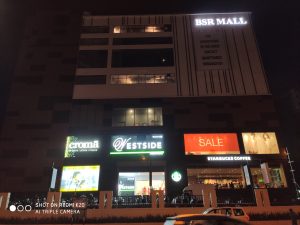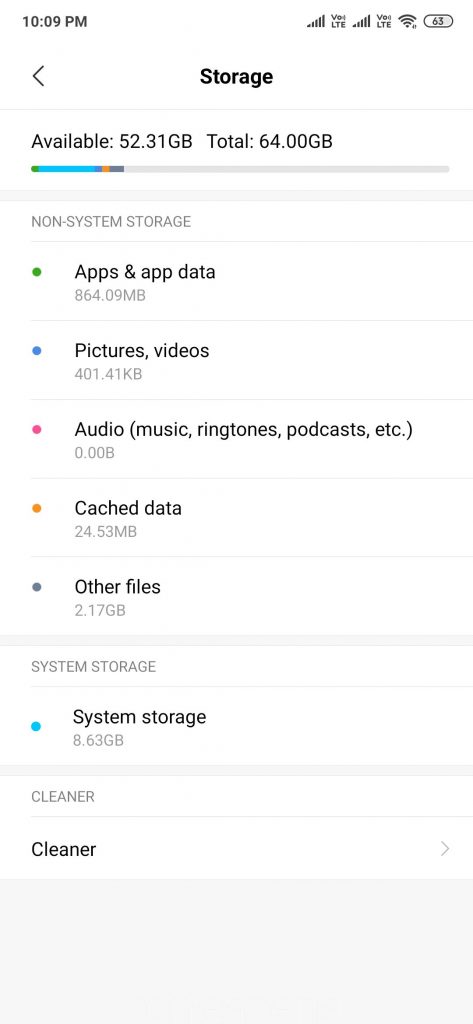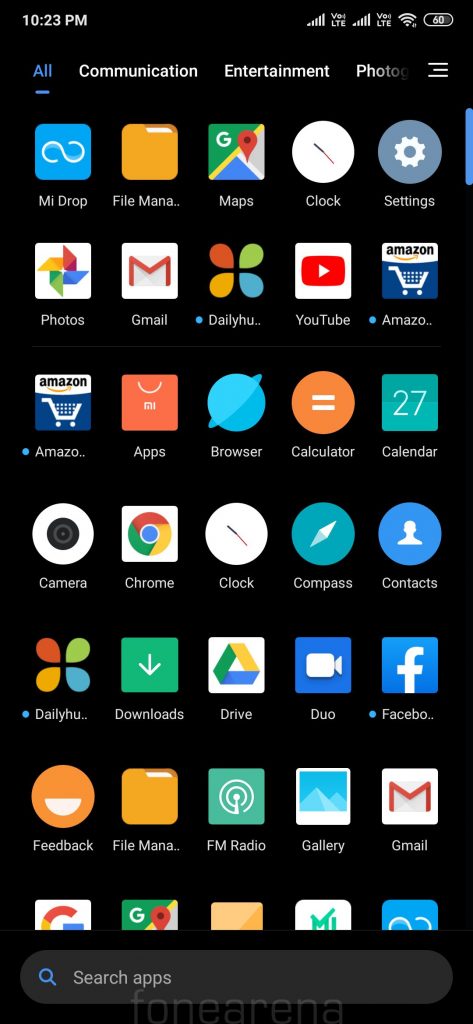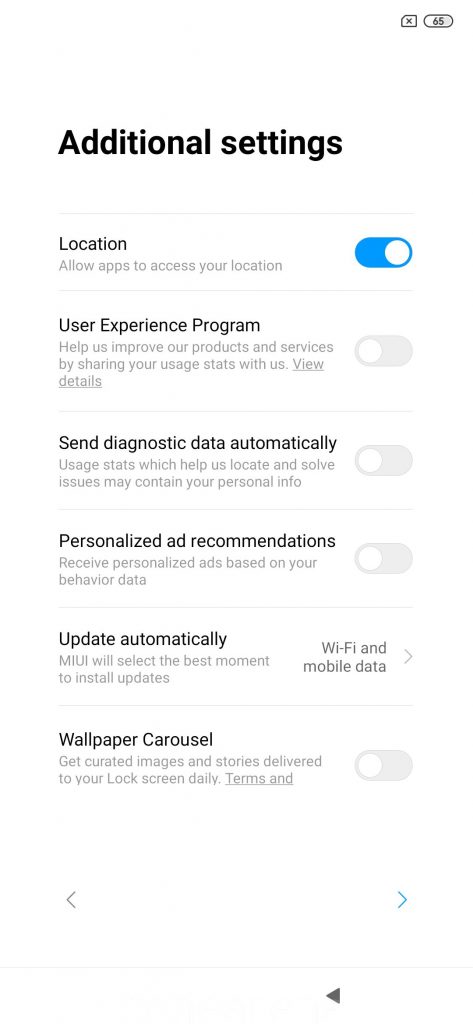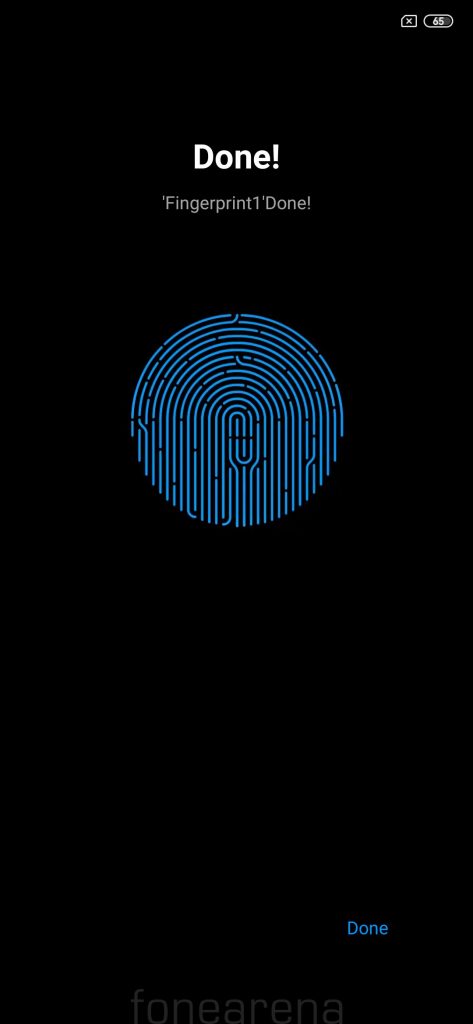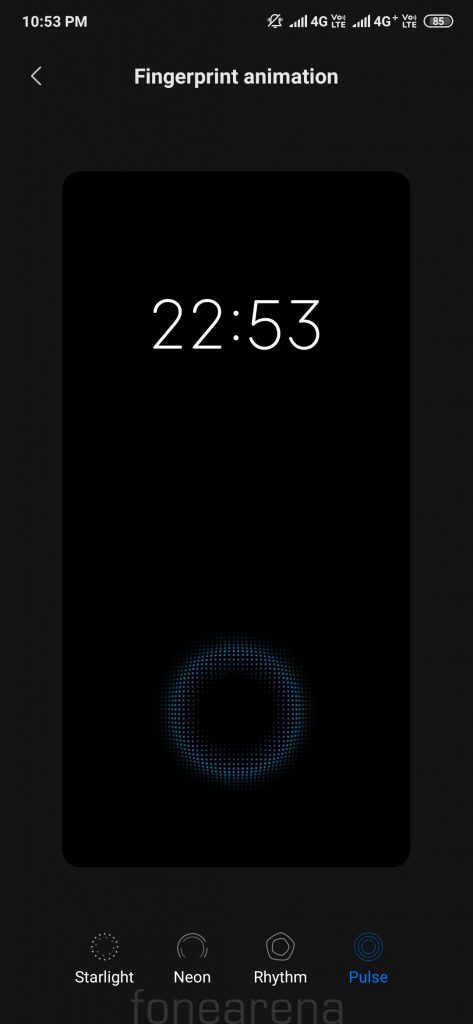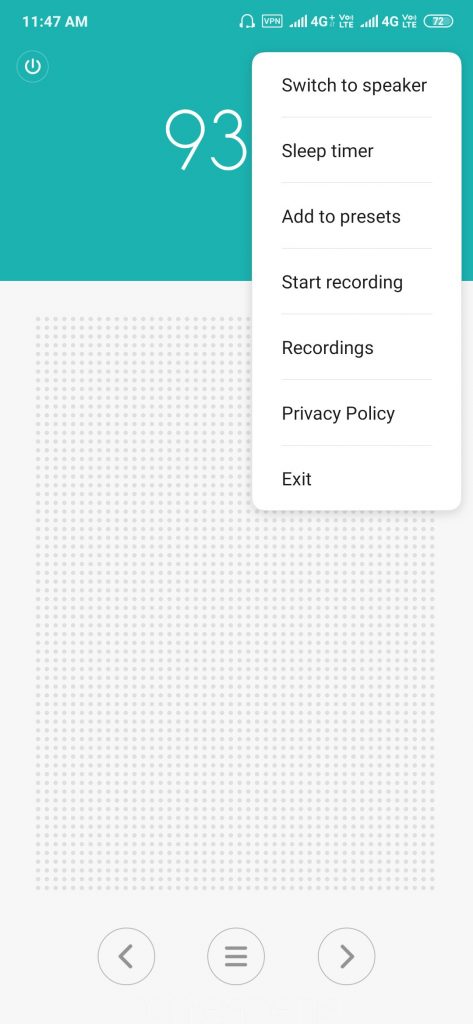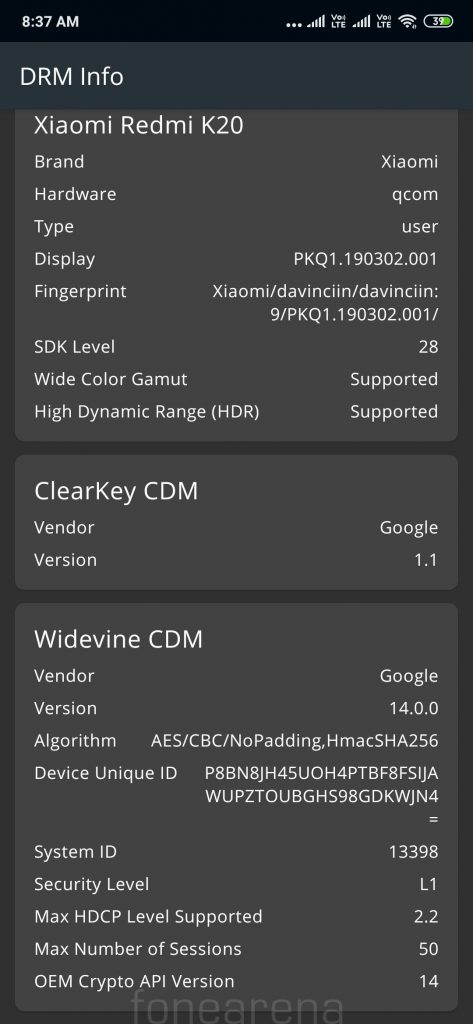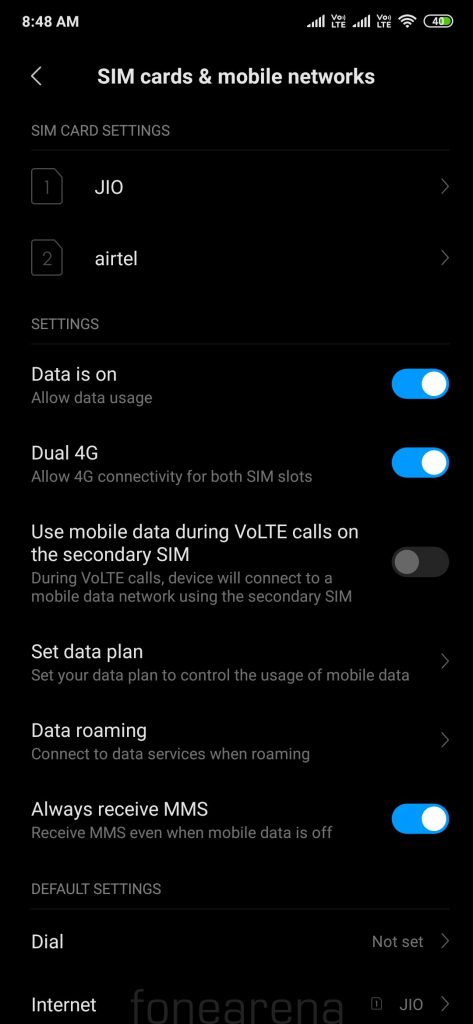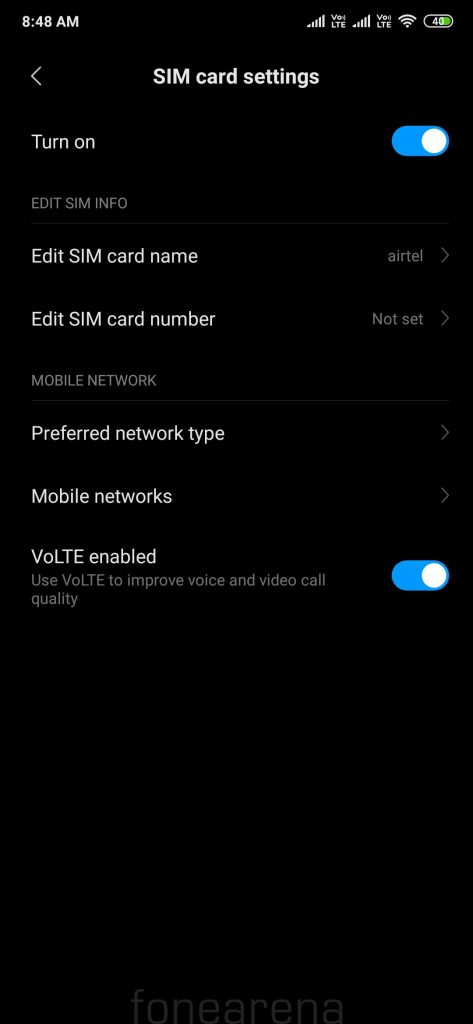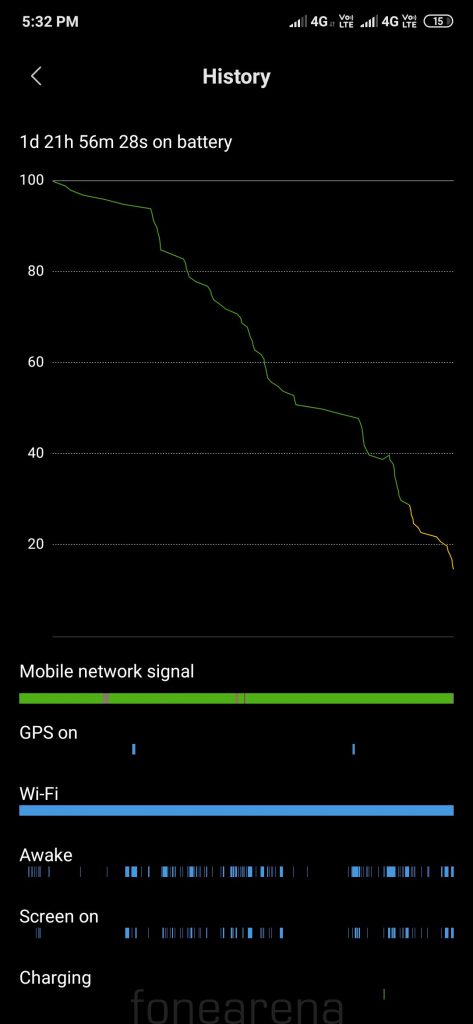
Xiaomi’s Redmi brand launched the Redmi K20 smartphone along with the Redmi K20 Pro in India last month making it the first Redmi series to cross Rs. 20,000 price tag. Even though it has the same 6.39-inch Full HD+ AMOLED screen with in-display fingerprint scanner, premium glass back, as the K20 Pro, it is powered by Snapdragon 730 SoC compared to Snapdragon 855 SoC, doesn’t have graphite 3D sheet, comes only in 6GB RAM version, lacks 4K 60 fps video recording, loses Hi-Fi DAC and doesn’t support 27W Sonic Charge fast charging. I’ve been using the phone for about a month now, let’s check out if you should get this one or go for the K20 Pro by spending more.
Unboxing
We already brought you the unboxing, check out the videos.
Display, Hardware and Design

The K20 has a large 6.39-inch Full HD+ no-notch Horizon AMOLED Display with a pixel resolution of 2340 × 1080 pixels and a pixel density of about 403 PPI. The display is bright, thanks to 600 nit brightness and 60000:1(typ) contrast ratio and the colors are vibrant since it has 103.8% of NTSC color gamut. Sunlight legibility is good, since it has a Sunlight display that uses hardware-level technology to adjust the contrast of each pixel in real time, so images are less affected by glare. It also has Corning Gorilla Glass 5 protection.
Since this has a 19.5:9 aspect ratio screen, you can pinch to zoom to fill the screen when you use video apps, but the content is cropped. Under the display options there are different options to adjust colors and contrast based on your preference. You can also adjust the night mode brightness and night mode temperature from the settings. There is also reading mode that lets you reduce the display’s blue light emission so it doesn’t cause eye strain when you are reading at night.
Ambient Always on display option can be enabled from display settings. It has 12 clock faces to choose from. This doesn’t consume a lot of power since this is an AMOLED screen, but the company says that it increases the power consumption so it turns off automatically when the phone stays dark for a long time or battery saver restrictions are applied. You can also set a schedule for the always on mode.
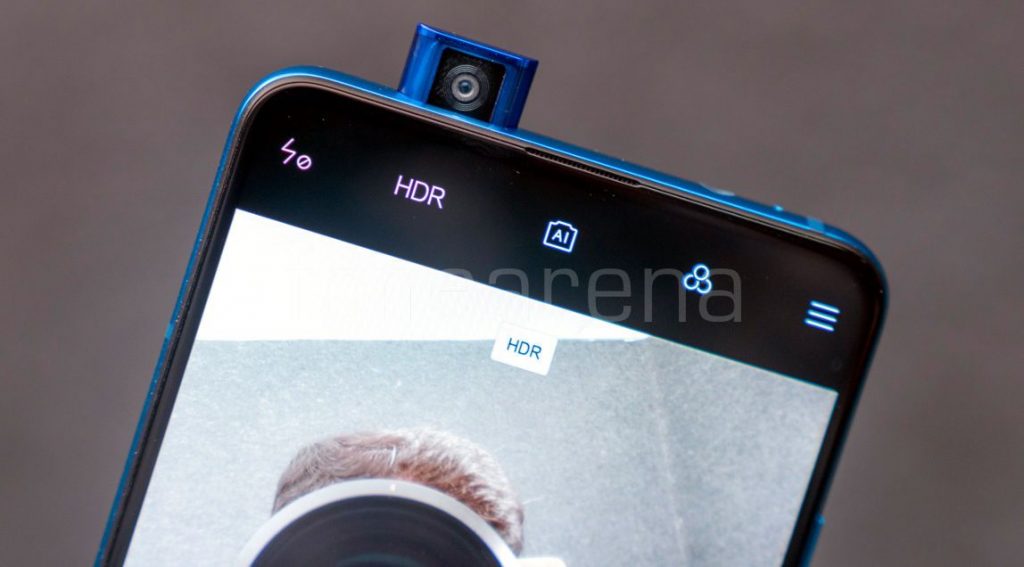
Above the display there is an earpiece on the top edge. The usual set of proximity and ambient light sensors are present on the bezel, but these are hardly visible. It also has a gyroscope and a magnetic sensor, otherwise known as a magnetometer.
It has a 20-megapixel pop-up front camera, which the company says has been tested 300,000 times, and it has Emergency drop detection and protection and Downward pressure detection as well as sapphire glass protection. The pop-up mechanism takes a second, which is not that slow, but it might be annoying for face unlock.
The pop-up camera also has a built-in notification LED (that can also light up when charging), but the notification light on the top is not much useful since you don’t always keep the top of the phone facing towards you. This light glows only in Blue color on the Blue version of the phone, and Red in the Red and Black versions. You can also enable visual effects for the front camera popup that shows animation along with light. You can also enable sound effects when the camera pops and retracts. There are also six sound effects to choose from.
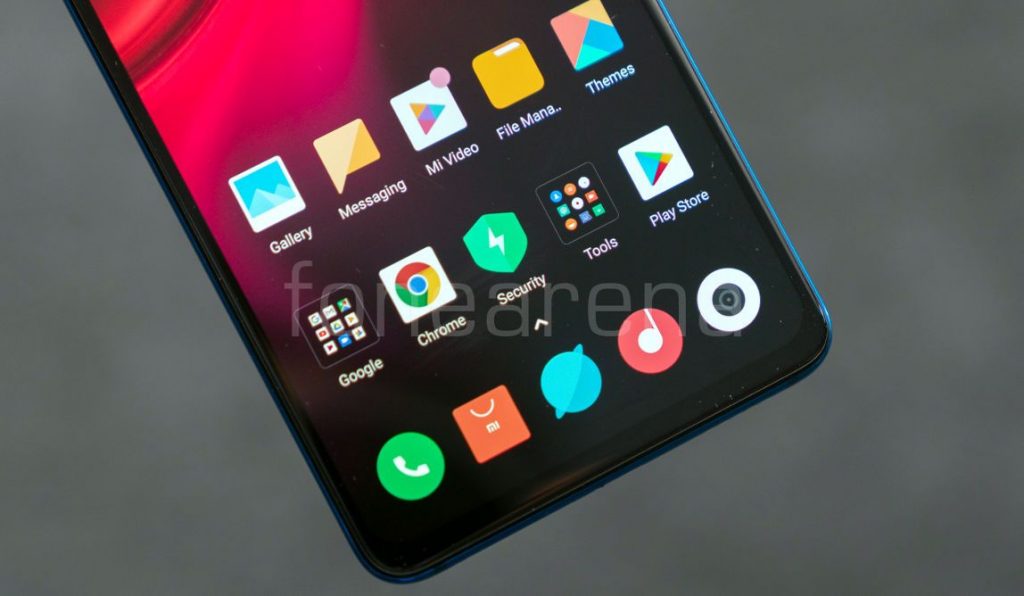
There is a small bezel below the display, but this is minimal compared to most other smartphones.
Coming to the button placements, the volume rockers and the power button (in red color) are present on the right side. The 3.5mm audio jack, secondary microphone and the pop-up camera is present on the top. On the bottom there is a speaker grill, primary microphone, USB Type-C port and a dual SIM slot. There is a metal frame on the sides, and you can see cutouts for the antenna on the top and the bottom. The phone lacks an infrared sensor, which is common in Redmi series phones.
Cheaper Redmi series phones get dedicated slot, and the Redmi Note series get Hybrid dual SIM slots, but the K20 series doesn’t have a microSD slot, which might be a deal breaker for some who choose the 64GB version. The is just 74.3mm wide and 156.7mm tall compared to 75.21mm width and 159.21mm tall Redmi Note 7, which has a slightly smaller 6.3-inch display.

Even though the phone has a large screen, it is compact to hold. It has about 86% screen-to-body ratio. This has a new Aura Prime Design that has a 3D glass back with flame patterns that looks and feels premium and also comes with Corning Gorilla Glass 5 Protection. The top camera has a holographic ring around it. Glass back of the phone attracts fingerprints easily, but it is not slippery to hold. If you are not a fan of flame pattern, you can choose the black color variant that has a Kevlar finish. It packs a 4000mAh built-in battery, similar to most of the latest Redmi phones. Since the phone has a glass back and a pop-up camera, it weighs 191 grams, which is not that heavy compared to the Redmi Note 7 Pro which weighs 186 grams, but this offers a heavier feel when holding the phone.
The phone even has a P2i nano coating similar to other latest Redmi phones, making it splash proof and it can also withstand light rain, but can’t be immersed in water since it lacks IP ratings. In addition to the Hard Protective Case in the box, the company also sell the Liquid Silicone Case in Black, Red and Blue colors for Rs. 499, which feels smooth and offers a better grip. However, the company has not released a tempered glass for the phone since the in-display fingerprint scanner might not work properly with the third-party glasses.
Camera
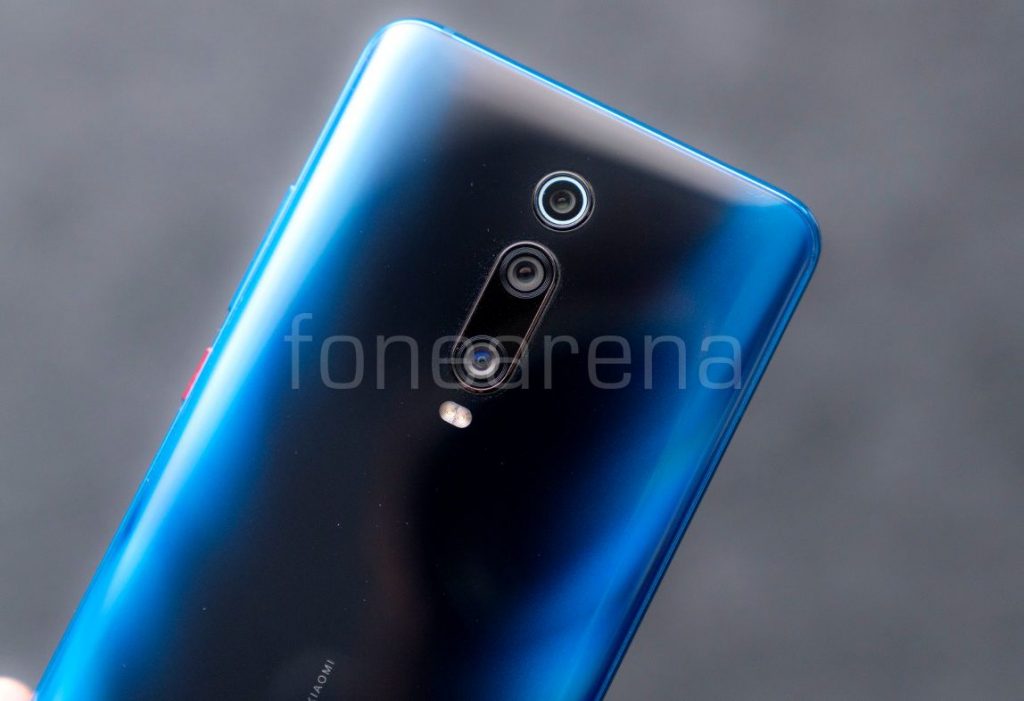
The phone packs a 48-megapixel primary rear camera with single LED Flash, f/1.75 aperture, 1/2.0″ Sony IMX582 sensor, 0.8μm pixel size, 6P lens has support for PDAF, EIS along with a secondary 13-megapixel 124.8° ultra-wide sensor with 1.12μm pixel size, f/2.4 aperture and an 8MP 1/4″ telephoto lens with 1.12μm pixel size, f/2.4 aperture for 2x loss-less zoom.

There is also a 20-megapixel pop-up front camera with 0.8μm pixel size and f/2.2 aperture.
The camera UI is familiar with other Xiaomi smartphones running MIUI 10 with flash, HDR, AI, color modes (Normal, Vivid, Film, Amour, Latte, Sun, Cookie, Calm, Soda, Gourmet, Glow, Berries, B&W and Fade) on the top. Pressing the menu option shows timer, square, tilt-shift, straighten and Google lens. There is a front camera toggle on the bottom along with option to select modes such as Short Video, Video, Photo, 48MP, Portrait, Night, Square, Panorama and Pro mode to adjust white balance, shutter speed (1/1000s to 32 seconds). Beautify option for the front camera lets you adjust several features, in addition to smoothness.
Coming to the image quality, daylight shots came out well with good dynamic range, thanks to the large sensor. HDR shots are better, and macro shots are good as well with good amount of details. 48MP mode that offers a lot of details, but the images are about 15MB in size. Wide-angle shots are good as well, and the telephoto lens is useful for 2x zoom, but the images are not sharp, and you need to touch to focus the zoom area properly. Also, the camera switches to main 48MP sensor to shoot 2x zoom images in low-lighting conditions and indoors. Portrait shots were decent, and the edge detection was good as well even though it uses software-based blur, and the images are zoomed.
Low-light shots are good, thanks to 4-in-1 Super Pixel technology that lets the camera’s sensor hardware combine 4 pixels into a single 1.6μm large pixel, and the night mode is even better making the images brighter offering more details, but there is still noise when there is hardly any light. Images with flash are good and the flash is not overpowering. Daylight front camera shots are decent, but low-light shots are just average since this has a f/2.2 aperture camera. Portrait shots have decent edge detection.
The phone also supports Camera2 API by default so Google Camera ports for advanced editing including RAW capture will work without an unlocked bootloader.
Check out some camera samples (Click the image to view the full resolution sample.).
It can record videos at 4k resolution at 30 fps, 1080p at up to 60 fps, and it also has slow motion 720p resolution video recording at up to 960fps, but this seems like 240fps converted into 960fps since the Snapdragon 730 officially support only 240fps slow motion recording. The phone has EIS, which works well, but there are frame drops if you move the phone a lot. Check out the video samples below.
Check out more set of samples here.
Software, UI and Apps
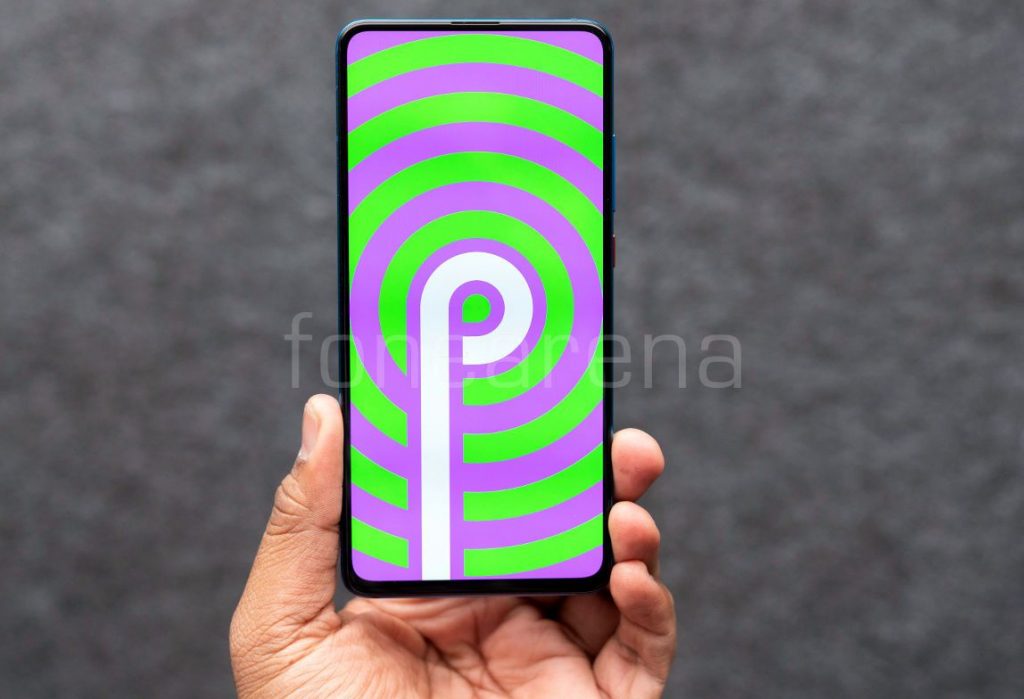
The phone runs Android 9.0 (Pie) out of the box with MIUI 10 on top with Android security update for July, 2019. The phone comes with POCO launcher as default compared to MIUI launcher on other Redmi phones. MIUI 10 that was introduced last year brings several features including full-screen hand gestures and improved recent menu that takes advantage of the full-screen displays, improved single-finger swipe down gesture to expand notifications, redesigned volume sliders and more.
Out of 6GB RAM, you get 5.6GB of usable RAM, and about 4GB of RAM is free when default apps are running in the background. Out of 64GB, you get about 52GB of free storage. The built-in Cleaner inside the storage lets free up space by clearing cache and obsolete files. Apart from the usual set of utility apps, Google apps and Xiaomi’s own set of apps, it comes pre-loaded with Amazon Shopping, Facebook, Dailyhunt, Opera News, Opera Mini and ShareChat apps. You can easily uninstall these apps.
Xiaomi is known for showing ads on its phones with MIUI, but this doesn’t show ads even when the recommendations are enabled on Music, Video, File Manager, Mi Drop, App Valut, Cleaner and others. However, some apps like Music, Video and Browser show notifications, so you need to disable notifications from the app settings.
In-display Fingerprint Sensor and Face unlock
The phone has a seventh generation in-display optical fingerprint sensor with 3P lens that is equivalent to a 7.2μm macro camera, which is 100% higher than the previous generation’s photosensitive area, and the finger area is also increased by 15%, which can capture the fingerprint optical signal better, according to the company. In-display fingerprint scanner takes about a second to unlock the phone, and there are four animation options to choose from, which can’t be disabled. You can enable option to show the fingerprint icon wwhen the screen is off when you raise the device, but this will consume more power says the company. You can add up to 5 fingerprints. You can also use the fingerprint for app local and payments in apps.
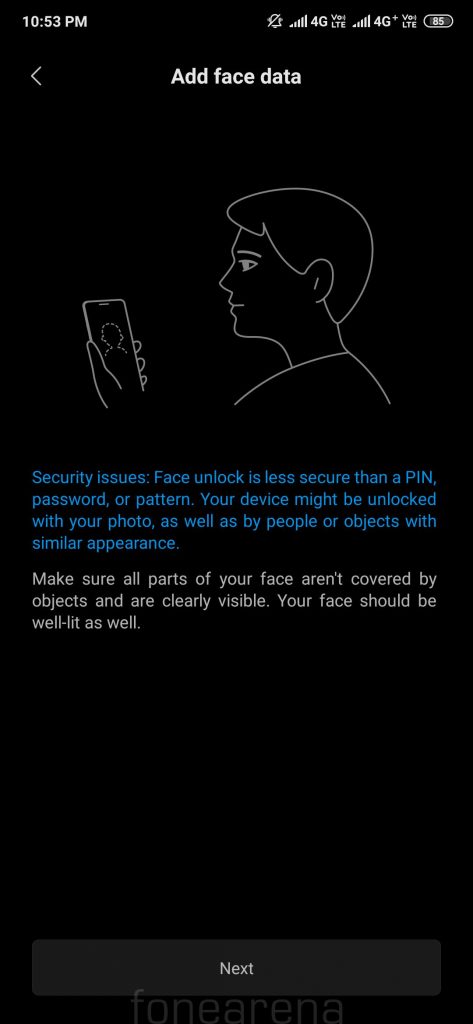
The phone also has face unlock, but it is not as secure as fingerprint since it can be unlocked with a photo, and also doesn’t work if you use sunglasses or hats.
Music Player, FM Radio and Multimedia
The Mi Music Player is the default music player. There is also equalizer. It also has FM Radio with recording. Audio through the speaker is decent, but could be better. Since the speaker is present on the bottom, audio doesn’t get muffled when the phone is on a flat surface. Audio through earphones is good as well, but it is not on par with the K20 which has a Qualcomm WCD9340 Hi-Fi DAC. You can enable Hi-Fi audio option from the settings that improves the audio quality by reducing noise and distortion. According to Qualcomm, the K20 with the Snapdragon 730 Mobile Platform has Qualcomm Aqstic WCD9375 audio codec tuned by guidance from ‘Golden Ears’ offering crisp output.
This comes with Widevine L1 support out of the box so that you can enjoy HD content on Hotstar, Amazon Prime Video, Netflix and other streaming apps. It even supports HDR content on Netflix, which is good.
Dual SIM and Connectivity
It has the usual set of connectivity features such as Wi-Fi 802.11 ac (2.4 + 5GHz), Bluetooth 5, GPS + GLONASS, but lack NFC, which is present in the Chinese version. It also has USB OTG support that lets you connect external drives. It has 4G connectivity and also has Voice-over-LTE (VoLTE) support for Reliance Jio, Airtel and others and supports Dual 4G VoLTE that lets you use 4G on both the SIMs. The phone has integrated Snapdragon X15 LTE modem.
The dialer and messaging UI are similar to other Xiaomi smartphones running MIUI 10. Since this is a dual SIM phone, you get the option to select either SIMs when calling or sending a text message. We did not face any call drops and the earpiece volume is good as well.
Performance and Benchmarks
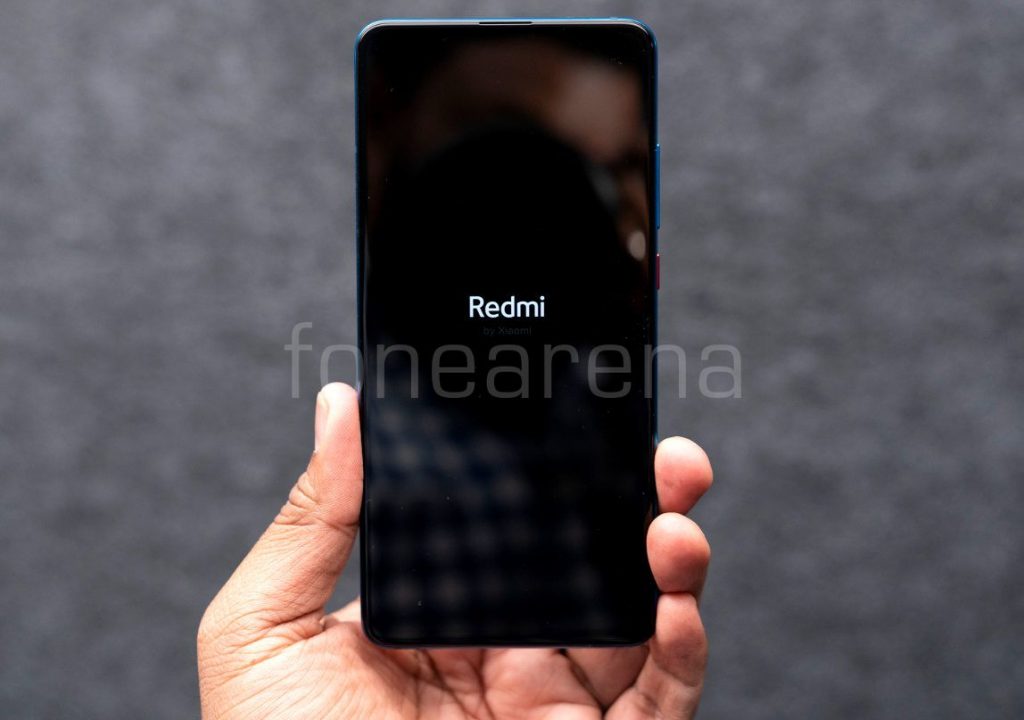
Coming to the performance, this is one of the first phones to be powered by an Octa-Core Snapdragon 730 8nm Mobile Platform, which has 2 x Kryo 470 Performance CPUs (A76-based) clocked at up to 2.2GHz and 6x Kryo 470 Efficiency CPUs (A55-based) at up to 1.8GHz. It has Adreno 618 GPU with support for Open GL ES 3.2, Open CL 2.0, as well as Vulkan 1.1 graphics, 6GB LPDDR4x RAM and 64GB / 128GB UFS 2.1 storage.
Thanks to the larger Kryo 470 cores based on new Cortex A76, this is faster than the Snapdragon 710/712 that uses Kryo 360 larger cores based on Cortex A75, promising a 35% performance uplift. The Adreno 618 GPU promises 25% increased performance compared to Adreno 616 on the Snapdragon 712.
We did not face any issues or frame drops in the graphic-intensive games, and PUBG works in full graphics. It gets a bit warm on intensive gaming and 4G data use since it has a glass back, but it doesn’t get too hot to handle. It lacks the 8-layer graphite cooling system for faster heat dissipation present in the K20 Pro. That said, check out some synthetic benchmark scores below.

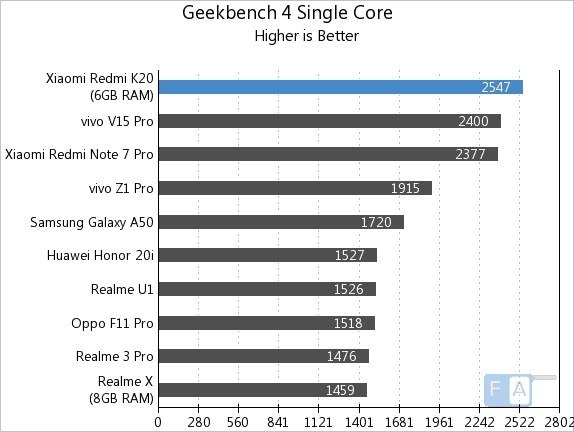
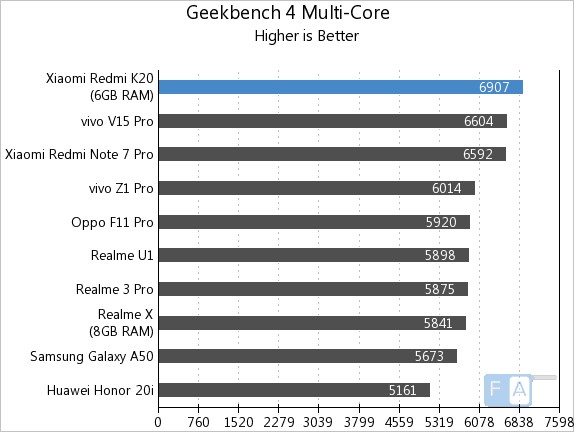

Check out the complete set of benchmark scores here. Also, check out the PUBG gameplay and gaming review below.
Battery life
Coming to the battery life, the 4000mAh (typical) / 3900mAh (minimum) built-in battery offers good battery life. It lasts for a day even with heavy use and a bit more with average use, and I got about 6 hours of screen on time (SOT) during my use. Since the phone has support for Quick Charge 3.0, it takes about 1 hour and 45 minutes to charge it from 0 to 100%, and 0 to 50% takes 44 minutes with the bundled 18W charger. It doesn’t have the 27W Sonic Charge support that the K20 Pro has, which doesn’t matter since the charging time is just 20 minutes faster, also you have to get the Sonic charger separately for Rs. 999.
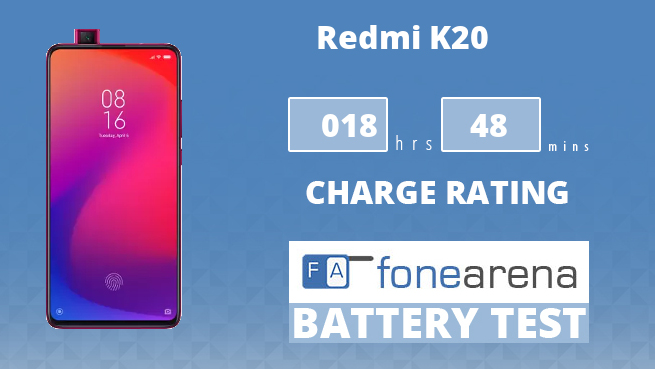
It achieved One Charge Rating of 18 hours and 48 minutes in our battery test, which is good for a phone with a 4000mAh battery. This is almost same as the Redmi K20 Pro.
Conclusion
Xiaomi is known for offering value-for-money (VFM) devices like the Redmi Note series. Of course, the K20 offers the same premium glass body and AMOLED HDR display as the K20 Pro, but you can say this is a value-for-money phone. It starts at Rs. 21,999 for the 6GB RAM with 64GB storage version, and you get the 128GB version if you spend Rs. 2000 more. If you spend Rs. 4000 more, you can get the K20 Pro 6GB + 128GB version, which offers a faster SoC, 4k 60 fps recording, Hi-Fi DAC and support for 27W charging.
Price of the K20 is slightly more than Chinese price, which the company says is due to the taxes levied on 35% components used in the phone that are imported since only 65% are locally sourced. Even though the phone received a price cut in China recently, it might take few months for a price cut in India. We can also expect bank offers for K20 series during the festive season. If the company plans to release the POCO F2 in the similar price range as last year’s F1, it is not clear where it will be placed, since it will obviously be powered by Snapdragon 855 that is on par with the K20 Pro. It is available from Flipkart, Mi.com and Mi Home stores. To summarize, here are the pros and cons of the smartphone.
Pros
- Brilliant no-notch AMOLED screen
- Good build quality
- Smooth performance
- Splash resistant body
Cons
- Average front camera
- Lack of microSD slot might be a deal breaker for 64GB users
- Not Value for Money compared to K20 Pro
Photography by Siraj

